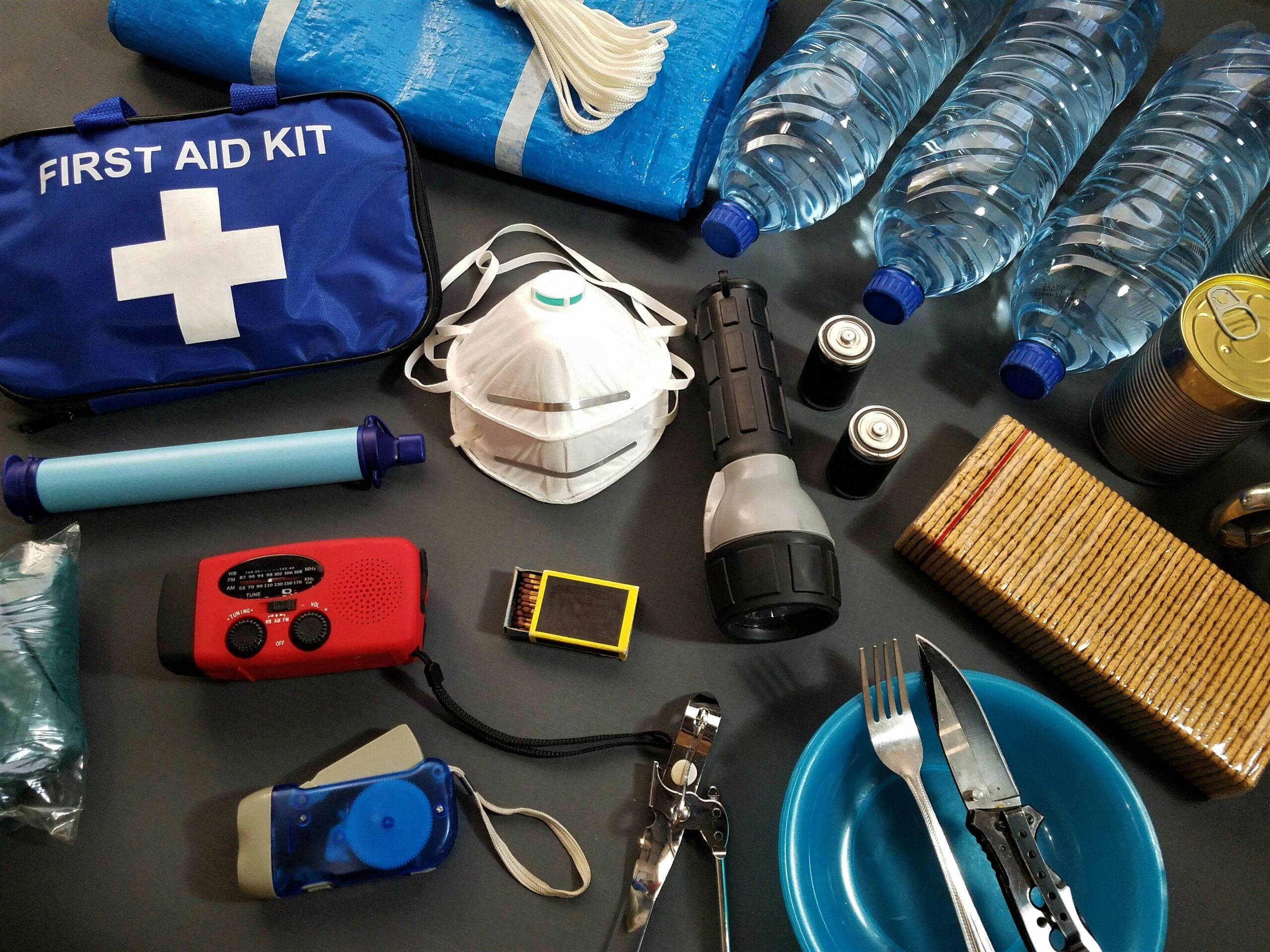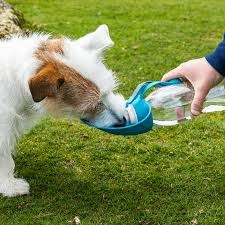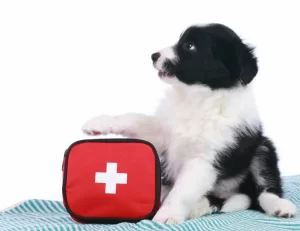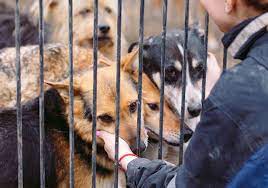Disasters come in many forms—floods, earthquakes, hurricanes, and even unexpected man-made events. When these happen, our pets need help just as much as we do. Having a well-stocked emergency kit for your dog brings peace of mind and makes handling any crisis much smoother.
Preparing ahead means you’re ready for whatever comes your way. This kit includes basics like food, water, and first aid—but also things tailored to your dog’s needs. Taking time to pack now can make a big difference when seconds count.
Table of Contents
ToggleEssential Items for a Dog Emergency Kit
Packing a dog emergency kit means thinking ahead about your pet’s health, safety, and comfort when disaster strikes. It’s not just about the basics — it’s about being prepared for any situation, so your dog can get through tough times with you by their side. Below, you’ll find the core supplies every dog kit should include, broken down by purpose.
Food and Water Supplies
Your dog depends on you to keep them nourished and hydrated, especially in emergencies when access to their usual food and water might be limited. Pack non-perishable dog food that your dog already eats to avoid stomach upset. Dry kibble works well, or sealed canned food if your dog prefers it.
Always bring enough food and water for at least 3 to 7 days. A good rule of thumb is one ounce of food per pound of your dog’s weight daily. For water, pack one gallon per day per dog — water is the most critical item.
Portable and collapsible water bowls make feeding on the go simple. You’ll find great options ranging from silicone foldables to lightweight plastic bowls, which are easy to clean and pack. Here are some practical options for dog travel bowls that combine convenience and durability.
Medical and First Aid Supplies
Your dog needs quick treatment if injured or sick during an emergency. A well-stocked first aid kit tailored to pets is a must. Fill it with basics like:
- Bandages and gauze
- Antiseptic wipes and ointments
- Tweezers for splinters or ticks
- Adhesive tape
- Digital thermometer
- Any medications your dog regularly uses
Also include a pet first aid guide so you know how to handle common injuries. Keep a copy of up-to-date vaccination records and any prescription info, which can be critical if you must visit a vet or shelter. For a detailed list and tips, see this dog first aid kit essentials guide.

Photo by Roger Brown
Identification and Documentation
If your dog gets lost during chaos, clear identification is the fastest way to get them home. Always have a sturdy collar with an ID tag containing your current contact details. Don’t rely on tags alone — make sure your dog’s microchip information is updated and registered properly.
Keep a recent photo of your dog and copies of veterinary records, including vaccination history and any medical conditions. These documents help prove ownership and assist shelters or vets if your dog is found. For guidance on what documents to keep, check out the advice on preparing pets from the CDC and Ready.gov.
Comfort and Safety Items
Emergency situations can be confusing and stressful for your dog. Pack things that help keep them calm and secure:
- Strong leash and harness for easy control and evacuation
- Extra collars with ID tags
- A favorite blanket or bedding to provide familiar scents and comfort
- Some toys to ease anxiety and keep your dog occupied
Having these on hand helps reduce your dog’s stress and keeps them safe in unfamiliar environments. For more ideas on comfort items, this pet emergency kit checklist offers helpful suggestions.
Sanitation Supplies
Cleanliness is key during emergencies to prevent illness and keep your dog healthy. Pack plenty of:
- Waste bags for picking up after your dog
- Disinfectant wipes for cleaning paws and surfaces
- Paper towels or cloths for quick clean-ups
- Hand sanitizer to use before and after handling your pet
These items help maintain hygiene and keep the environment safe for both you and your dog. Proper sanitation matters more than ever when regular facilities might not be accessible.
Being prepared means your dog can stay safe, comfortable, and healthy no matter what situation arises. Make sure your emergency kit includes all these essentials, and keep it updated regularly as your dog’s needs change. For more tips on preparing pet emergency kits, explore additional resources on disaster prep for pets.
Customizing the Emergency Kit for Different Disasters
A one-size-fits-all emergency kit won’t always cut it when disaster strikes. Different situations call for different tools and precautions. Tailoring your dog’s emergency kit to the specific risks you may face can make all the difference in their safety and comfort. Let’s break down what you’ll want to include based on the threat—whether it’s flooding, quakes, cold snaps, or fire.
Floods and Hurricanes
Floods and hurricanes bring heavy rain, rising water, and soaring humidity. Keeping supplies dry and your dog safe in slippery, wet conditions is key. Use waterproof containers to store food, medications, and important documents—plastic bins with tight lids work great. Consider a dog life jacket if your area may require wading through or escaping via water routes. These provide flotation and keep your dog more visible.
Heat and humidity often rise after storms, so cooling supplies are important too. Pack a cooling mat, damp towels, or portable fans to help your dog stay comfortable. Don’t forget fresh water for hydration and water bowls that won’t tip easily. If you need ideas on pet disaster kits for floods or storms, the Red Cross explains how to prepare your pets for emergencies with practical tips.
Earthquakes
When the ground shakes, you need a kit that’s easy to grab and go quickly. Focus on compactness and portability—a small, sturdy backpack or duffel works best. Strong leashes and harnesses are a must since your dog may panic and try to bolt. Look for materials that withstand rough use and resist wear.
Dust, debris, and broken glass might be everywhere after an earthquake. Include wipes or moist towelettes to clean your dog’s paws and fur. A lightweight blanket can shield them from dirt and sharp objects on the ground. If you haven’t already, review disaster readiness tips, like those detailed by the CDC’s pet preparedness guide. Keeping your dog safe means being ready to move fast and keep them controlled no matter what the ground does.

Photo by Roger Brown
Winter Storms and Cold Weather Emergencies
Cold weather can be just as dangerous as heat. Protect your dog from frostbite and hypothermia by packing warm blankets and pet-safe heating packs—these disposable or rechargeable packs help maintain body heat without risk. If you know your dog will be outdoors or on icy sidewalks, include paw protection wax or waterproof boots to guard against ice, salt, and cold surfaces.
Since winter weather might cut off travel, ensure you have enough food and water for longer stays. Keep your dog’s emergency kit somewhere easy to reach in case you have to leave quickly. For more detailed winter pet safety advice, the American Veterinary Medical Association offers helpful guidance, covering everything from shelter to protective gear.
Fires and Smoke Emergencies
Fires can spread fast and fill the air with dangerous smoke. Your dog’s breathing is vulnerable, so consider adding respiratory protection like pet masks designed to filter smoke particles, especially if you live in fire-prone areas. Plan and practice multiple escape routes from your home to evacuate your dog safely.
Smoke leaves behind soot and irritants that cling to fur. Pack soot wipes or gentle pet wipes to clean your dog after evacuating, reducing inhalation of hazardous particles. Make sure your kit also contains strong leashes and a secure carrier so your dog stays calm and prevents escape.
To learn more about keeping your pets safe during fires, check out the detailed recommendations from the American Red Cross on pet fire safety.
Each disaster comes with its quirks and challenges. Crafting your dog’s emergency kit to address these specific dangers keeps you ready and helps your furry friend stay safe and comfortable no matter what happens. Internal links in this article such as Essential Items for a Dog Emergency Kit can deepen your prepping knowledge and help you assemble the perfect kit for your needs.
Disaster Prep for Pets: What to Pack in a Dog Emergency Kit for All Situations
Disasters come in many forms—floods, earthquakes, hurricanes, and even unexpected man-made events. When these happen, our pets need help just as much as we do. Having a well-stocked emergency kit for your dog brings peace of mind and makes handling any crisis much smoother.
Preparing ahead means you’re ready for whatever comes your way. This kit includes basics like food, water, and first aid—but also things tailored to your dog’s needs. Taking time to pack now can make a big difference when seconds count.
Essential Items for a Dog Emergency Kit
Packing a dog emergency kit means thinking ahead about your pet’s health, safety, and comfort when disaster strikes. It’s not just about the basics — it’s about being prepared for any situation, so your dog can get through tough times with you by their side. Below, you’ll find the core supplies every dog kit should include, broken down by purpose.
Food and Water Supplies
Your dog depends on you to keep them nourished and hydrated, especially in emergencies when access to their usual food and water might be limited. Pack non-perishable dog food that your dog already eats to avoid stomach upset. Dry kibble works well, or sealed canned food if your dog prefers it.
Always bring enough food and water for at least 3 to 7 days. A good rule of thumb is one ounce of food per pound of your dog’s weight daily. For water, pack one gallon per day per dog — water is the most critical item.
Portable and collapsible water bowls make feeding on the go simple. You’ll find great options ranging from silicone foldables to lightweight plastic bowls, which are easy to clean and pack. Here are some practical options for dog travel bowls that combine convenience and durability.
Medical and First Aid Supplies
Your dog needs quick treatment if injured or sick during an emergency. A well-stocked first aid kit tailored to pets is a must. Fill it with basics like:
- Bandages and gauze
- Antiseptic wipes and ointments
- Tweezers for splinters or ticks
- Adhesive tape
- Digital thermometer
- Any medications your dog regularly uses
Also include a pet first aid guide so you know how to handle common injuries. Keep a copy of up-to-date vaccination records and any prescription info, which can be critical if you must visit a vet or shelter. For a detailed list and tips, see this dog first aid kit essentials guide.

Photo by Roger Brown
Identification and Documentation
If your dog gets lost during chaos, clear identification is the fastest way to get them home. Always have a sturdy collar with an ID tag containing your current contact details. Don’t rely on tags alone — make sure your dog’s microchip information is updated and registered properly.
Keep a recent photo of your dog and copies of veterinary records, including vaccination history and any medical conditions. These documents help prove ownership and assist shelters or vets if your dog is found. For guidance on what documents to keep, check out the advice on preparing pets from the CDC and Ready.gov.
Comfort and Safety Items
Emergency situations can be confusing and stressful for your dog. Pack things that help keep them calm and secure:
- Strong leash and harness for easy control and evacuation
- Extra collars with ID tags
- A favorite blanket or bedding to provide familiar scents and comfort
- Some toys to ease anxiety and keep your dog occupied
Having these on hand helps reduce your dog’s stress and keeps them safe in unfamiliar environments. For more ideas on comfort items, this pet emergency kit checklist offers helpful suggestions.
Sanitation Supplies
Cleanliness is key during emergencies to prevent illness and keep your dog healthy. Pack plenty of:
- Waste bags for picking up after your dog
- Disinfectant wipes for cleaning paws and surfaces
- Paper towels or cloths for quick clean-ups
- Hand sanitizer to use before and after handling your pet
These items help maintain hygiene and keep the environment safe for both you and your dog. Proper sanitation matters more than ever when regular facilities might not be accessible.
Being prepared means your dog can stay safe, comfortable, and healthy no matter what situation arises. Make sure your emergency kit includes all these essentials, and keep it updated regularly as your dog’s needs change. For more tips on preparing pet emergency kits, explore additional resources on disaster prep for pets.
Customizing the Emergency Kit for Different Disasters
A one-size-fits-all emergency kit won’t always cut it when disaster strikes. Different situations call for different tools and precautions. Tailoring your dog’s emergency kit to the specific risks you may face can make all the difference in their safety and comfort. Let’s break down what you’ll want to include based on the threat—whether it’s flooding, quakes, cold snaps, or fire.
Floods and Hurricanes
Floods and hurricanes bring heavy rain, rising water, and soaring humidity. Keeping supplies dry and your dog safe in slippery, wet conditions is key. Use waterproof containers to store food, medications, and important documents—plastic bins with tight lids work great. Consider a dog life jacket if your area may require wading through or escaping via water routes. These provide flotation and keep your dog more visible.
Heat and humidity often rise after storms, so cooling supplies are important too. Pack a cooling mat, damp towels, or portable fans to help your dog stay comfortable. Don’t forget fresh water for hydration and water bowls that won’t tip easily. If you need ideas on pet disaster kits for floods or storms, the Red Cross explains how to prepare your pets for emergencies with practical tips.
Earthquakes
When the ground shakes, you need a kit that’s easy to grab and go quickly. Focus on compactness and portability—a small, sturdy backpack or duffel works best. Strong leashes and harnesses are a must since your dog may panic and try to bolt. Look for materials that withstand rough use and resist wear.
Dust, debris, and broken glass might be everywhere after an earthquake. Include wipes or moist towelettes to clean your dog’s paws and fur. A lightweight blanket can shield them from dirt and sharp objects on the ground. If you haven’t already, review disaster readiness tips, like those detailed by the CDC’s pet preparedness guide. Keeping your dog safe means being ready to move fast and keep them controlled no matter what the ground does.

Photo by Roger Brown
Winter Storms and Cold Weather Emergencies
Cold weather can be just as dangerous as heat. Protect your dog from frostbite and hypothermia by packing warm blankets and pet-safe heating packs—these disposable or rechargeable packs help maintain body heat without risk. If you know your dog will be outdoors or on icy sidewalks, include paw protection wax or waterproof boots to guard against ice, salt, and cold surfaces.
Since winter weather might cut off travel, ensure you have enough food and water for longer stays. Keep your dog’s emergency kit somewhere easy to reach in case you have to leave quickly. For more detailed winter pet safety advice, the American Veterinary Medical Association offers helpful guidance, covering everything from shelter to protective gear.
Fires and Smoke Emergencies
Fires can spread fast and fill the air with dangerous smoke. Your dog’s breathing is vulnerable, so consider adding respiratory protection like pet masks designed to filter smoke particles, especially if you live in fire-prone areas. Plan and practice multiple escape routes from your home to evacuate your dog safely.
Smoke leaves behind soot and irritants that cling to fur. Pack soot wipes or gentle pet wipes to clean your dog after evacuating, reducing inhalation of hazardous particles. Make sure your kit also contains strong leashes and a secure carrier so your dog stays calm and prevents escape.
To learn more about keeping your pets safe during fires, check out the detailed recommendations from the American Red Cross on pet fire safety.
Each disaster comes with its quirks and challenges. Crafting your dog’s emergency kit to address these specific dangers keeps you ready and helps your furry friend stay safe and comfortable no matter what happens. Internal links in this article such as Essential Items for a Dog Emergency Kit can deepen your prepping knowledge and help you assemble the perfect kit for your needs.










![The Ultimate Guide to Road Tripping with Your Dog [2025 Update]](https://bellabeanupdate.com/wp-content/uploads/2025/05/pexels-photo-1143369-300x209.jpeg)




















